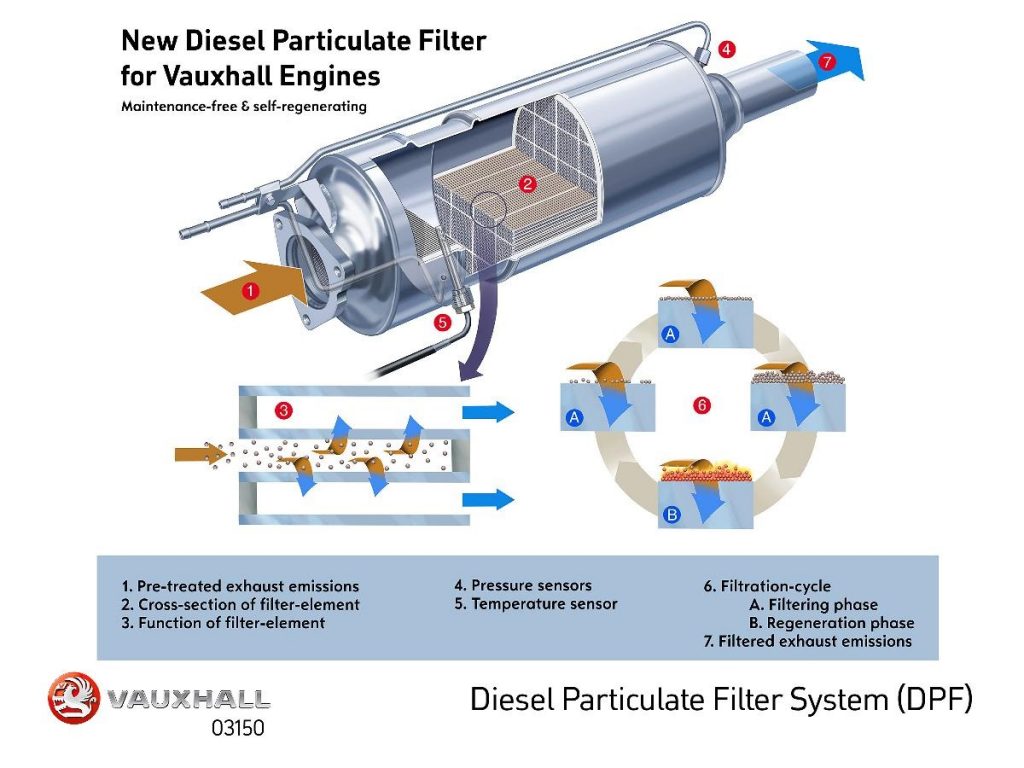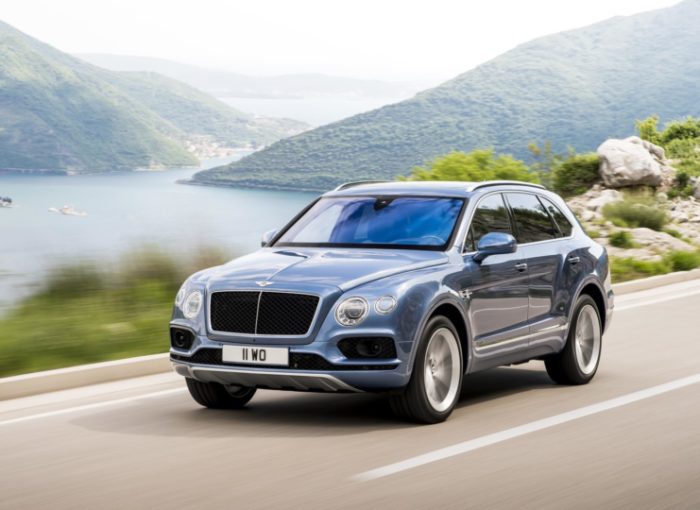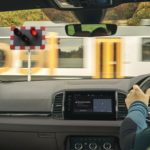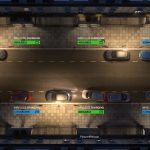Every modern diesel car sold in the EU since 2009 has a DPF or Diesel Particulate Filter. This is located in the car’s exhaust system and designed to remove the harmful particulates ‑ visible as smoke ‑ that a diesel engine produces. If it stops working as it should, a warning light shows on the dashboard.
What does it mean when the DPF light comes on
The orange warning light comes on if the filter is getting clogged. If the filter becomes completely blocked, the red light would illuminate and the engine would eventually stop.

Is it safe to drive my car with the DPF light on?
Yes. You can drive the car with the DPF light on. The light is there for a reason: it’s to warn you that there’s a problem with the DPF that needs attention. The idea is that when you see the light, you either do what it says in the car’s user manual, or you take it to the garage for a forced regeneration. See below.
How long can you drive with a DPF light on?
You shouldn’t drive indefinitely with the DPF warning. If you simply ignore the light and carry on driving, the ECU will eventually put the car into limp home mode. This means you’ll notice a drop in engine power and responsiveness. The car may then not start until you rectify the problem.
How long does it take to unblock a DPF?
You should be able to unblock the filter in around 20 minutes but you must be travelling at speeds higher than 40mph for that time. Doing so forces the car to perform the regeneration cycle.
Driving at the higher speed causes the exhaust gases to get up to the temperature necessary for the diesel particulate filter to burn off the accumulated soot. When the filter has cleared itself, the warning light should go out and the engine won’t be in danger of stopping.
Read why you don’t have to warm a car up
What is a DPF on a car?
The DPF is a filter designed to trap the particulates (soot) that is produced by the diesel combustion process. This soot builds up on the filter surface over time. It is then burnt off by a procedure called regeneration. This method of cleaning is done automatically by the car every 300 to 500 miles when on a long journey.
What are the different types of filter regeneration?
There are three different kinds of diesel particulate filter regeneration: forced, active and passive. Active regeneration is when the vehicle detects that the DPF is getting blocked. It does this because sensors detect higher back pressure in the exhaust. The car then initiates regeneration by itself – an increase in temperature ‑ to burn the soot off and clear the filter.
Passive regeneration is when the car burns off the soot in the filter as a matter of course because the exhaust temperatures have reached the necessary level.
Forced regeneration occurs when you take the car to a garage with the DPF light on. By plugging into the engine’s software, the garage can prompt the higher exhaust heat that causes regeneration to take place.
How to clear DPF warning light?
There are also products available from motor retailers that claim to help clean a DPF. You are supposed to pour them into the fuel tank every few thousand miles. They then work by assisting in the combustion and burning of the soot in the DPF. They will get good results but can’t overcome the fundamental problem of the exhaust not getting hot enough.

Why does the filter get blocked?
Diesel engines with DPFs don’t like start-stop journeys. Soot collects in the DPF but the exhaust doesn’t get warm enough to burn it off. If the regeneration process is never triggered, the DPF becomes clogged.
Can DPF trouble be prevented?
You can stop any DPF problems by ensuring your diesel vehicle isn’t only used for short start-stop journeys. A long run every couple of weeks should ensure that the filter can clear itself. If you can’t manage this, your DPF will become fatally clogged. When this happens, it will need to be replaced which can cost anywhere from £400 to more than £1000 depending on where you go and what type of part you use.
If you are looking to buy a car that will only do short journeys or spend most of its life at low speed in a congested city, a diesel may not be the best solution. Have a look at cars with small petrol engines instead.
Can you remove the DPF?
A simple fix used to be for garages to remove the DPF altogether. However, this has been outlawed. If your car was built with a DPF and a garage detects that one is no longer present, it will automatically fail its MOT.

I’ve been writing about cars and motoring for more than 25 years. My career started on a long-departed classic car weekly magazine called AutoClassic. I’ve since pitched up at Autosport, Auto Express, the News of the World, Sunday Times and most recently the Daily Telegraph. When I’m not writing about cars and motoring, I’m probably doing some kind of sport or working in my garden.







